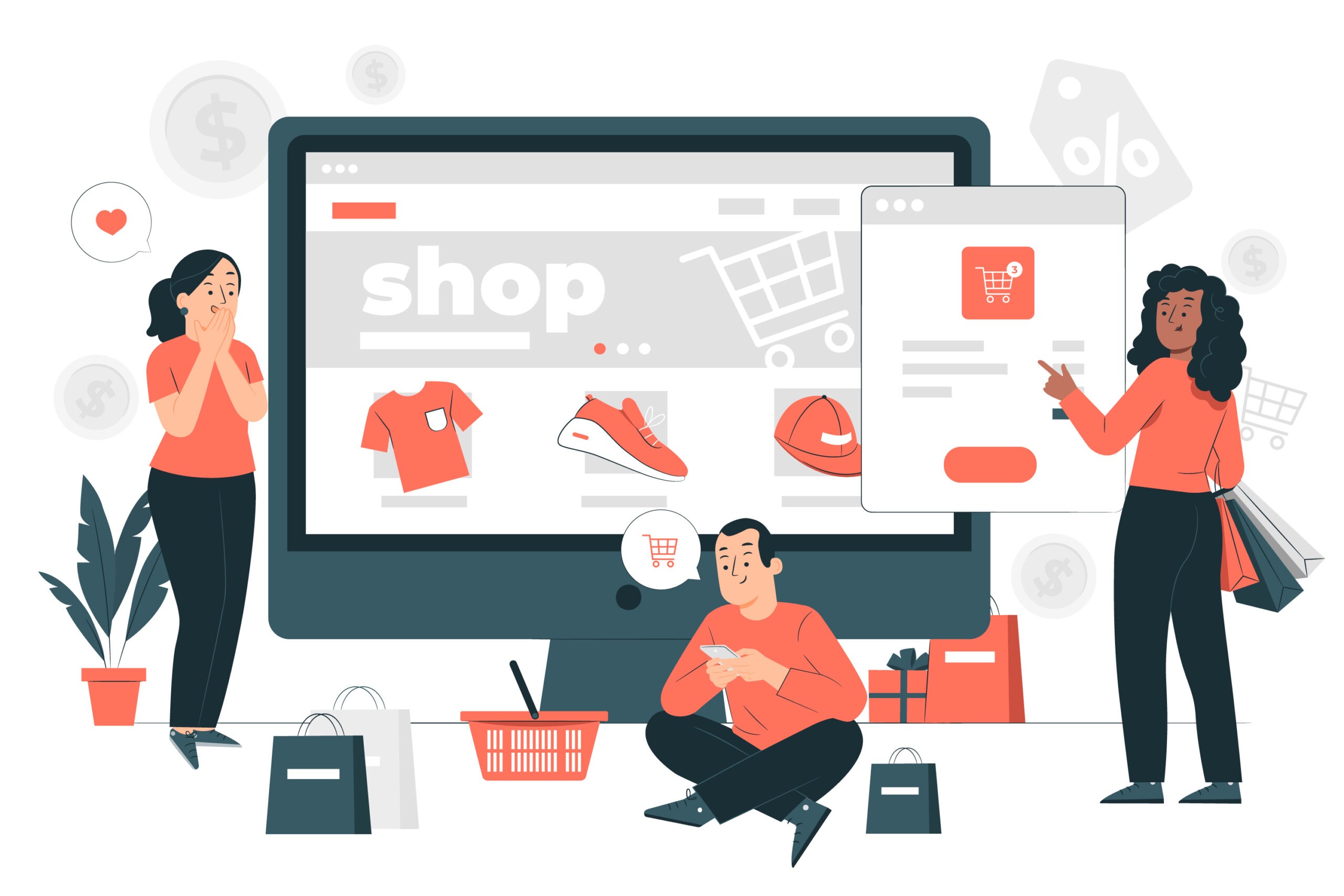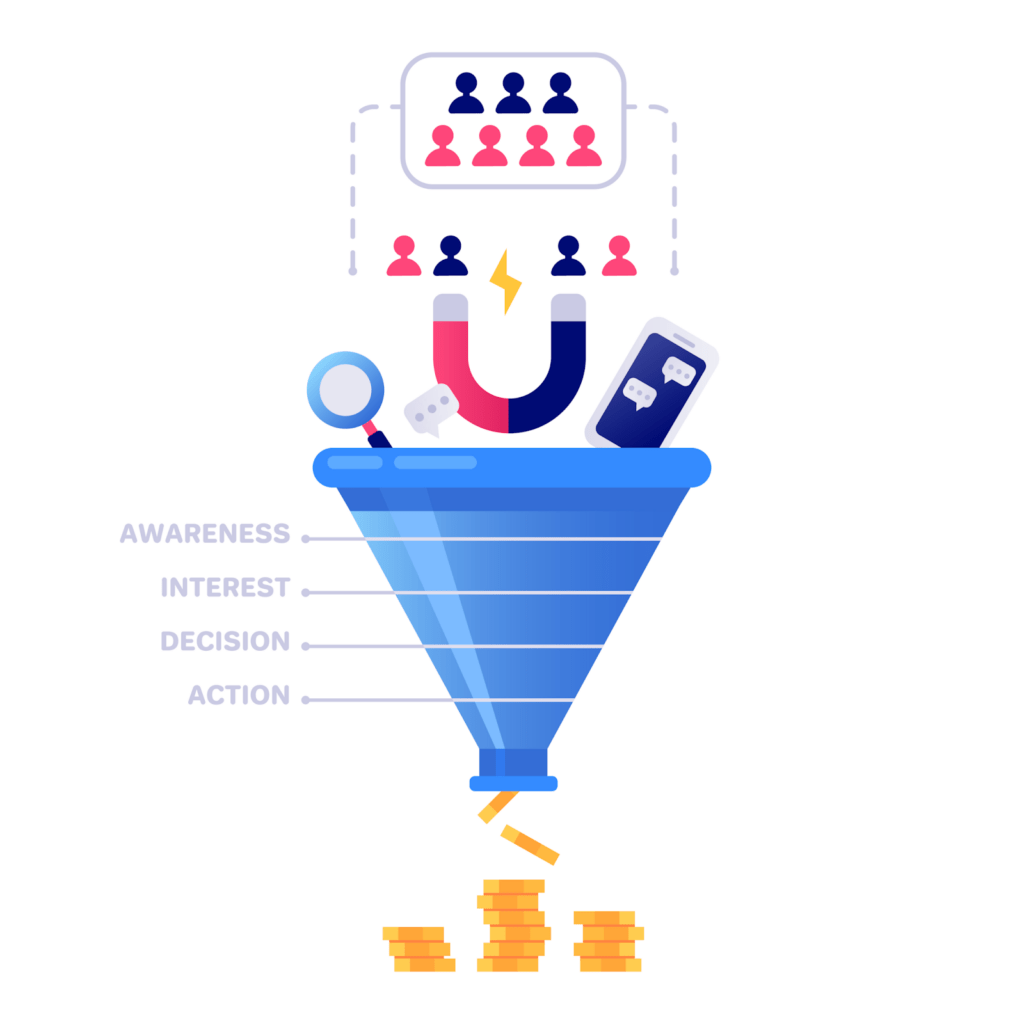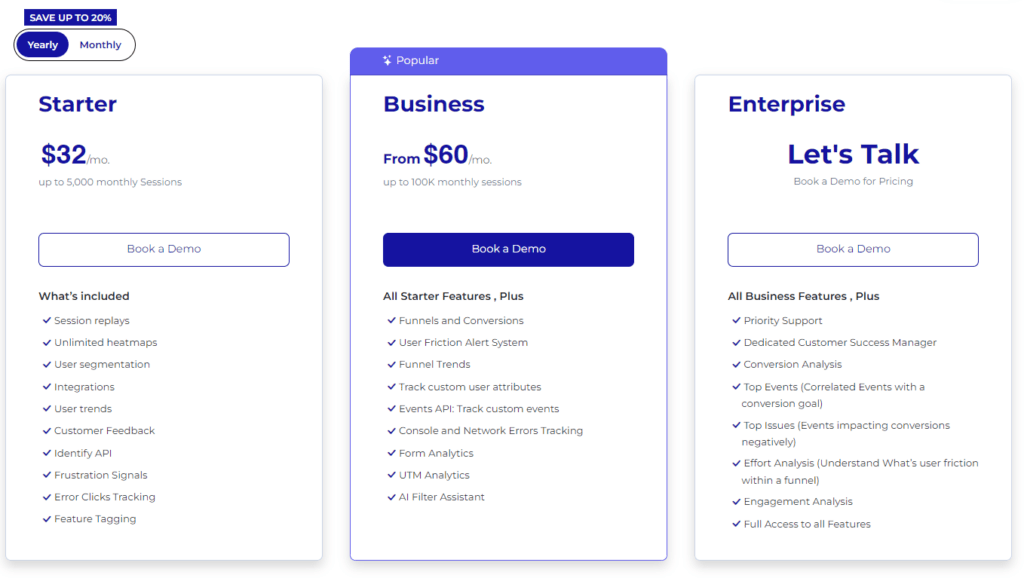Are you looking to optimize your website's performance but unsure if VWO is the right choice? You're in luck! We've compiled...

How to Build An Ecommerce Conversion Funnel That Works
No matter how good your product is, customers aren't going to be lining up to buy it without an effective eCommerce conversion funnel.
There are different stages of the buyer's journey you need to strengthen if you want to maximize conversions. These make up the conversion funnel and, in eCommerce, it will be the driving force of your business' success.
But what is an eCommerce conversion funnel? And how do you make it work? In this guide, we'll talk about everything you need to know to optimize your conversion funnel, including funnel stages, optimization best practices, and tools that can help you create an unrivaled funnel.
What is an eCommerce Conversion Funnel?
An eCommerce conversion funnel represents the customer's journey on your website, starting from the moment they learn about your online store until they make a purchase. The funnel concept helps eCommerce businesses understand how potential customers move through different stages of the buying process and find ways to improve the customer journey.
Elements of a Traditional Conversion Funnel

Before we dissect the eCommerce conversion funnel model, we must review the stages of a traditional sales funnel to better understand the customer journey.
A traditional conversion funnel is divided into four stages: Awareness, Interest, Desire, and Action. Here is a deeper look into each stage:
Awareness
The awareness stage is all about drawing attention to your brand or product. It's the digital equivalent of making a first impression, where the goal is to stand out and be noticed by potential customers. Effective strategies in this stage involve SEO, social media, and content marketing to cast a wide net.
Interest
Once you've caught their attention, the next step is to keep potential customers engaged. The interest stage involves providing your audience with valuable information about your products or services, highlighting features and benefits that meet their needs or solve their problems.
Desire
At this point, interest evolves into a genuine desire to own your product or use your service. This stage is crucial for building an emotional connection with your audience, making them feel that they not only need but want what you're offering. Techniques such as testimonials, reviews, and demonstrations can help transform interest into desire.
Action
Perhaps the most important stage of the customer journey is the action stage, where desire propels the customer into making a purchase. However, you don't want potential paying customers to change their minds at the last minute. So, the focus here is on creating a seamless and frictionless checkout process, offering clear calls to action, and providing various payment options to facilitate the buying process.
Ecommerce Sales Funnel Stages
Most eCommerce businesses follow the AIDA sales funnel model, but we can look at each stage from a more specific point of view. A typical eCommerce site will adhere to the following model:
- Attracting Traffic First things first, you must attract your target audience to your eCommerce site. Unlike physical stores that rely on location and foot traffic, eCommerce sites must employ digital marketing strategies such as SEO, pay-per-click advertising, social media marketing, and content marketing to increase visibility and attract visitors.
- Engaging Users Once visitors land on your site, your job now is to keep their attention. Remember, most website visitors appreciate a user-friendly website design, clear navigation, compelling product descriptions, and attractive visuals. At this stage, the aim is to capture potential customers' interest and encourage them to explore your site deeper, reducing the bounce rate and increasing the time spent on the site.
- Converting Visitors to Leads Now that you have website visitors who are interested in your offerings, the next goal is to push them further into your eCommerce funnel. Focus on converting casual visitors into leads by encouraging them to take some form of action. This could be signing up for a newsletter, creating an account, adding items to a cart, or engaging with online chat support. These actions signal a higher level of interest and provide opportunities for businesses to collect valuable information for further engagement.
- Closing the Sale Sales closing is where all your efforts culminate into the desired action: a purchase. For an eCommerce business, closing strategies typically involve streamlining the checkout process, offering multiple payment options, ensuring security and privacy in transactions, and addressing any last-minute hesitations or questions that might prevent a sale. Clear CTAs and reassurances about product quality and return policies can also help seal the deal.
- Nurturing Post-Purchase The eCommerce funnel doesn't end with a closed sale. After customers buy something from you, the focus shifts to turning them into loyal customers. This includes follow-up communication, customer service support, requests for feedback, and personalized marketing efforts. By creating a positive post-purchase experience, your business can foster loyalty, encourage repeat business, and generate word-of-mouth referrals from existing customers.
The Benefits of an Optimized eCommerce Conversion Funnel
You'll know that your eCommerce conversion funnel works if you're getting a high volume of sales. But it's not just about your desired endpoint. Optimizing your eCommerce funnel also helps you unlock the following benefits:
- Improved Customer Insights: Optimizing your eCommerce funnel starts with analysis, which will provide valuable data on customer behavior, preferences, and pain points. These insights can help you better understand what drives your customers at each step of their journey and tailor your approach more effectively to engage them.
- Increased Customer Loyalty: A positive and memorable shopping experience can significantly impact customer satisfaction, fostering a sense of loyalty and trust in your brand. Happy customers are more likely to become repeat buyers and are often willing to become vocal advocates for your brand, sharing their experiences with friends and family or through social media. It's essentially free marketing!
- Cost Efficiency in Marketing: Optimizing each stage of the conversion funnel can help you allocate your marketing budget more effectively. Targeted strategies ensure that you're spending money where it's most likely to lead to conversions, reducing wasted spend on broad, ineffective campaigns.
- Greater Competitive Edge: An optimized conversion funnel can set your eCommerce site apart from competitors, attracting customers who seek convenience, reliability, and a seamless buying process.
5 Actionable Tips for eCommerce Conversion Funnel Optimization
Optimizing your eCommerce conversion funnel requires a variety of strategies designed to improve the customer journey in all stages of the funnel. We've mentioned a few general tips in the sections beforehand, but here are more specific tactics you can use:
1. Upgrade Product Discovery
An effective eCommerce funnel starts with optimized strategies for the awareness stage. You can attract more website visitors through:
- SEO Optimization: Use keyword research to build product pages and blog content, making it easier for potential customers to find you through search engines. For example, if you sell eco-friendly kitchenware, ensure your pages are optimized for searches like “eco-friendly cooking utensils” or “sustainable kitchen gadgets.”
- Social Media Advertising: Leverage targeted ads on platforms like Instagram or Facebook, focusing on interests that align with your products. For instance, targeting ads at users interested in sustainability if you’re selling eco-friendly products.
2. Create an Engaging Website
Improving the shopping experience in an online store and a physical store shares some similarities; you must create an attractive environment for potential customers and remove anything that can make them walk out. Try:
- Website Design and Usability: Ensure your website is easy to navigate and visually appealing. For example, Overnight Glasses uses clear categories for their products, high-quality images, and a responsive design that works well on both desktop and mobile devices . Session recording tools can help you with this.
- Interactive Content: Implement tools like quizzes or product finders that help users identify the best products for their needs, thus increasing engagement and the likelihood of conversion.
- Eliminating Frustration Points: Identify and discard any element that can cause users to exit before they move deeper into the marketing funnel ( funnel drops ). For example, you should address slow loading times and get rid of visual clutter, as these can easily cause visitors to exit your page.
3. Focus on Lead Conversion
Once you capture the interest of your target audience, you don't want to waste those potential sales. Here are a few strategies that can help you push them further into your conversion funnel:
- Email Sign-up Incentives: Offer a discount or free guide in exchange for email sign-ups to nurture leads through email marketing. For example, a “10% off your first order” discount can encourage users to provide their email address.
- Live Chat Support: Implement live chat functionality to answer visitors' questions in real-time, helping to remove barriers to conversion.
- Social Proof: User feedback from previous customers to showcase your products' quality. This can help customers lingering at the window to finally walk into your store saying, "If there are already people in here, then the store must be good."
4. Make Purchasing Easy
One thing that can turn away prospective customers is a complicated checkout page. Perfect one of the last stages of your eCommerce conversion funnel through:
- Simplified Checkout Process: Reduce the number of steps in your checkout process and eliminate unnecessary fields in the checkout form to minimize friction. For example, allow guest checkout without the need to create an account.
- Multiple Payment Options: Include various payment methods such as credit cards, PayPal, and newer options like Apple Pay or Afterpay to cater to different preferences.
- Secure Checkout: Use safe checkout badges from recognized companies to make customers feel more secure about making purchases from your website.
5. Foster Repeat Business
The primary goal of an eCommerce funnel is to lead to a purchase, but your efforts shouldn't end there. Take advantage of the opportunity to create repeat customers with:
- Personalized Follow-up Emails: Send customized thank-you emails post-purchase, and follow up with personalized product recommendations based on previous purchases.
- Loyalty Programs: Create a loyalty program that rewards customers for repeat purchases. For instance, a points system where points can be redeemed for discounts on future purchases encourages customers to return.
- Post-Purchase Support: Extend your customer service to customers that have already completed their purchases. This might include simplifying returns, offering replacements for damaged items, and providing multiple options for contacting your brand. Even if something went wrong with their purchase, you still have the chance to make it right.
How to Measure the Efficiency of Your eCommerce Sales Funnel
How do you determine if your eCommerce conversion funnel is working as well as it should? The number of sales? Yes, possibly, but it is not the only indicator of a successful funnel.
For a more nuanced approach, track key performance indicators that can help you measure the efficiency of your marketing funnel, including:
- Conversion Rate: The overall conversion rate is the most direct measure of your funnel's efficiency. It tells you the percentage of website visitors who make a purchase. Monitoring conversion rates at each funnel stage can help identify where potential customers drop off and where improvements can be made.
- Traffic Sources: Understanding where your traffic comes from (e.g., organic search, paid ads, social media, email marketing) can help you determine which channels are most effective at bringing potential customers into your funnel.
- Bounce Rate: The bounce rate indicates the percentage of visitors who leave your site after viewing only one page. A high bounce rate could suggest that your landing pages are not engaging or relevant enough to encourage further exploration.
- Average Order Value (AOV): This measures the average amount spent each time a customer places an order on your site. Increasing your AOV is a sign of an effective sales funnel, as it indicates that customers are finding more value in your offerings.
- Cart Abandonment Rate: This metric shows the percentage of shoppers who add items to their cart but leave without completing the purchase. A high cart abandonment rate can indicate issues with the checkout process, such as unexpected costs, complicated navigation, or lack of payment options.
- Customer Lifetime Value (CLV): CLV predicts the total value your business can expect from a single customer account throughout its relationship with your brand. It's a good measure of customer satisfaction and the viability of your online business.
- Email Open and Click-Through Rates: For eCommerce sites that use email marketing as part of their funnel, tracking the open and click-through rates of emails can provide insights into how effectively your messages engage potential customers and drive them back to your site.
Why Optimize Your Marketing Funnel
Sales funnels are the heart of all types of business. In eCommerce where revenue heavily relies on digital marketing, having an effective eCommerce sales funnel helps you improve all aspects of your business.
All that said, optimizing eCommerce funnels is rarely an easy process. Luckily, there are AI tools that can supplement every step of the optimization process from analysis to automation.
Create an Effective eCommerce Conversion Funnel with FullSession
The first step of eCommerce sales funnel optimization is analyzing your business' website, a central factor that affects your conversion rates. But how do you pinpoint what is working and what's not? And where do you even get started?
FullSession is a web analytics tool that helps track valuable metrics of your eCommerce conversion funnel. Here's a snapshot of what FullSession offers:
- Funnel data: Find out which parts of your conversion funnel are causing your prospects to drop out. Track KPIs like site visits, sign-up rates, bounce rates, and more.
- Session recordings : FullSession offers replays and live recordings of customers using your website, giving you a clear idea of how they navigate your site and what can cause frustration.
- Interactive heat maps: Website heatmaps track clicks, scrolls, and dynamic elements like drop-down menus and pop-ups. A heatmap provides a visual representation of which items are gaining the most attention vs. getting ignored, and potential issues like confusing graphics.
- Customer feedback tools: FullSession lets you integrate customer feedback tools into your website, letting visitors leave instant reviews on product pages, checkout pages, and more. This feedback provides more insights into eCommerce conversion funnel optimization.
FullSession Pricing Plans

Here are more details on each plan.
- The Starter plan costs $39/month or $32/year and allows you to monitor up to 5,000 monthly sessions with up to 6 months of data storage.
- The Business plan costs $75/month or $60/year and helps you to track and analyze up to 100,000 monthly sessions with up to 12 months of data storage.
- The Enterprise plan has custom pricing and offers customizable sessions plus full access to all features.
FAQs About Ecommerce Conversion Funnels
How often should I review my Ecommerce conversion funnel?
Regularly! Market trends and consumer behaviors change, so it's wise to review and tweak your funnel every quarter.
Is it worth investing in specialized software for funnel optimization?
If you're serious about maximizing conversions, specialized software like FullSession can provide valuable insights and automation tools to streamline the process.




